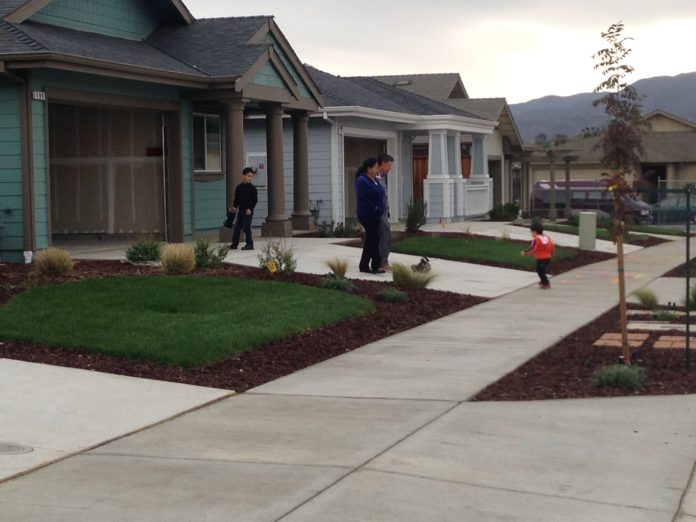
The County’s affordable housing program is not logically constructed. The San Benito County Planning Commission recently had a notably fair and informative workshop on affordable housing. Yet in the end they were not presented with the options they needed to make a program that works, especially in the unincorporated areas where, for political reasons, the San Benito County Board of Supervisors has traditionally shunned high density housing. Affordable housing programs are often illogically constructed starting with the erroneous idea that nothing the county does impacts the market; the opposite is true.
The first problem for San Benito County and Hollister is the lack or housing inventory of any type—this overall shortage is almost never addressed. The state’s January, 2016, estimated SBC vacancy rate was only 4.8 percent, tied for the fifth-lowest among the 58 counties. Breaking that down, the City of Hollister had a tighter housing market with a vacancy rate of 3.4 percent while it was 6.6 percent in the county’s unincorporated areas (also the fifth lowest in that category).
The second problem is the lack of multi-family housing in the unincorporated area—that’s the key to affordability for the three lower tiers of the five housing income levels. The unincorporated area of SBC is woefully lacking in high density housing, only 1.8 percent were multi-family units; the third lowest percentage in the entire state. For comparison, Monterey, Santa Cruz and Santa Clara Counties had 8.4 percent, 12.7 percent and 16.9 percent multi-family units respectively in their unincorporated areas. The City of Hollister had 20.7 percent and San Juan Bautista 26 percent, although its limited population makes a smaller impact.
The third and most serious problem is that our affordable housing concept ties problem one and two together—it relies on scarce and expensive new development to fund housing that is more affordable (a much better term than affordable), but it does not facilitate the developments that underpin the entire system. Adding an affordable housing burden raises costs and lowers affordability for the unsubsidized median and moderate income categories. What was a median or moderate income housing before may become unaffordable; all you have done is shifted the lack of affordability to someone else. What we are saying is, “If or when you build something you have to build affordable units too,” yet we hardly worry about making if or when happen.
How low is a 4.8 percent vacancy rate? Only six counties, Contra Costa, Alameda, Santa Clara, Orange, Ventura and SBC, had vacancy rates at the lowest levels, between 4.1 and 4.9 percent. It’s harder to find housing in SBC than San Francisco, which had a vacancy rate of 7.2 percent. Ten counties had vacancy rates between 5.0 and 6.9 percent; 12 between 7.0 and 9.9 percent; 16 between 10.0 and 19.9 percent and fourteen counties had vacancy rates 20.0 percent or higher.
In other words housing is in critically short supply throughout SBC without regard to affordability. We should determine who is currently trying to find housing and what level they can afford before plunging into a program that might damage what is already a “no-vacancy” market. If you want more affordable homes for the workforce you have to offer incentives that keep the price of that housing down and hook the incentives to the selling price which usually involves increased density.
Overall housing is always a supply and demand market; a tight supply of anything—especially buildable land—means higher prices for everyone. The obvious answer is higher densities and more multi-unit rentals, which house people at lower cost, but the county has rarely exercised those options in the unincorporated areas. The argument that “people should live in cities” is disingenuous if new cities are constantly being prevented from coming into being.
Let’s put the county to the test. The first step has to be to adequately staff the planning department both in quantity and quality. There is no hope of significant improvement if that office has to keep operating shorthanded and/or with inexperienced or temporary personnel. The county needs to put together a growth plan to 2035 that looks at the milestones every four years to re-tune the growth rate on to the selected path. This would require the county to at least think about a year-over-year growth rate. Finally, they have to set preferences for multi-family, higher density development in the unincorporated areas to take a fair share of the problem and design the system so that type of development receives the appropriate incentives.
(Data Source: California Department of Finance Population and Housing Estimate Report for January, 2016).









